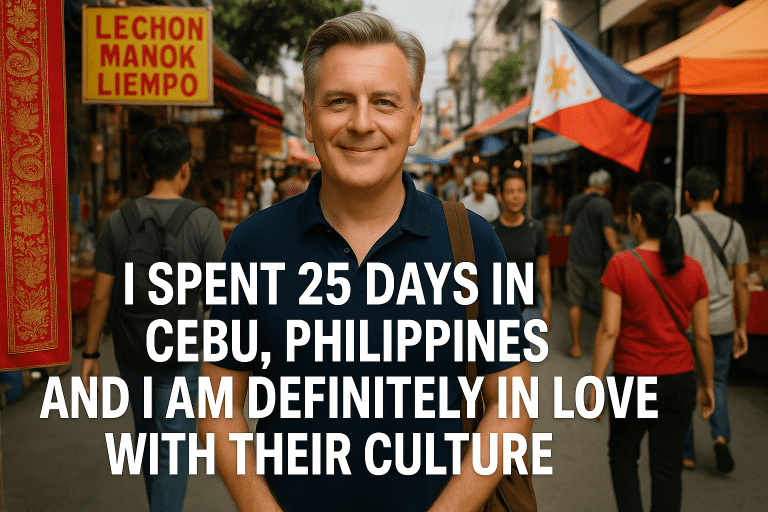
The world watches, captivated, as Asia steps onto the global stage, not just as an economic powerhouse, but as a dynamic cultural force. Among the most visible and influential expressions of this rising prominence is the region’s vibrant style scene. What began for many global observers as a fascination with the meticulously crafted aesthetics of K-Pop idols has blossomed into a broader appreciation for the depth, innovation, and cultural richness emanating from Asian fashion. This isn’t merely a fleeting trend; it is Asia’s Style Revolution from K-Pop, a transformation that bridges the gap between popular culture and the upper echelons of high fashion, reshaping global perceptions of beauty, creativity, and influence.
Echoes of the Past: Historical Foundations of Asian Style
To truly understand this revolution, we must look beyond the dazzling lights of the stage or the exclusive runways of Paris and Milan. The roots of Asian style are ancient and diverse, intertwined with centuries of tradition, philosophy, and intricate craftsmanship. Across the continent, distinct cultural identities gave rise to unique forms of dress – the elegant hanbok of Korea, the graceful kimono of Japan, the vibrant saris and dhotis of India, the intricate textiles of Southeast Asia.
These garments were not merely clothing; they were narratives woven in fabric, reflecting social status, marital state, regional identity, and spiritual beliefs. Trade routes like the Silk Road facilitated the exchange of materials, techniques, and aesthetics between Asia and the West for millennia, demonstrating that interaction and mutual influence in fashion are not new phenomena. However, the colonial era and subsequent globalization brought Western fashion paradigms to the forefront, often marginalizing traditional wear and creating a dynamic where Asian countries primarily served as manufacturing hubs for Western brands. This historical context is crucial; it highlights the significance of the current moment, where Asia is moving from being a producer for the global fashion industry to becoming a key originator of global fashion trends and creative direction.
The Japanese Vanguard: Pioneering a New Aesthetic
The late 20th and early 21st centuries witnessed pivotal shifts. Japan, recovering and industrializing rapidly, became a significant early force in challenging Western fashion norms. Designers like Yohji Yamamoto, Rei Kawakubo (Comme des Garçons), and Issey Miyake emerged in the 1970s and 80s, bringing an avant-garde sensibility, a focus on structure and deconstruction, and a philosophical approach to clothing that stood in stark contrast to the prevailing Western glamour. Their work, often utilizing monochromatic palettes and unconventional silhouettes, was deeply informed by Japanese aesthetics yet radically forward-thinking. They paved the way, proving that Asian perspectives could not only participate in but also fundamentally alter the global fashion discourse. This era laid crucial groundwork, demonstrating that innovation and cultural depth from Asia could resonate internationally and achieve high fashion credibility.
The K-Pop Catalyst: Igniting Global Fashion Frenzy
While Japan’s pioneers were challenging norms at the high-art end of fashion, a different kind of revolution was brewing in South Korea: K-Pop. What began as a domestic music industry grew into a global phenomenon, and fashion was integral to its success. K-Pop groups meticulously cultivate unique concepts and aesthetics for each album and performance, transforming their members into visual storytellers. Their styling is bold, experimental, and highly influential. Unlike traditional pop stars who might follow trends, K-Pop often sets them, blending high fashion pieces with streetwear, mixing masculine and feminine codes, and embracing vibrant colors and patterns previously uncommon in mainstream Western fashion. The sheer volume and rapid turnover of K-Pop content means a constant influx of new looks and styling ideas, disseminated instantly through music videos, social media, and performances. Fans worldwide don’t just listen to the music; they engage with the entire visual package, aspiring to emulate their idols’ style. This fan culture, fueled by the internet, creates a powerful engine for trend propagation, pushing Asian-originated looks into the global consciousness at an unprecedented speed. K-Pop’s influence democratized fashion interest, making concepts like “airport fashion” (casual yet stylish outfits worn by idols traveling) a significant source of inspiration for millions.
Multifaceted Influence: How K-Pop Reshaped Trends
The impact of K-Pop is multifaceted. It has normalized bolder styling, particularly in menswear, where idols frequently challenge traditional gendered aesthetics with makeup, accessories, and clothing choices. It has put a spotlight on Korean designers and stylists, who are now recognized globally for their innovative work.
Furthermore, it has created massive demand for the specific brands worn by idols, from global luxury houses to burgeoning Korean streetwear labels. This has led to luxury brands actively seeking out K-Pop idols as brand ambassadors, recognizing their immense global reach and influence, effectively merging the worlds of pop culture and high fashion in a way that bypasses traditional gatekeepers. This synergy is a defining characteristic of Asia’s current fashion moment: pop culture isn’t just referencing high fashion; it’s becoming a pathway to high fashion influence.
The New Guard: Contemporary Asian Designers on the World Stage
Parallel to the K-Pop surge and building on the legacy of Japanese pioneers, a new generation of Asian designers is making significant waves in global high fashion. From South Korea, designers like Juun.J or Wooyoungmi bring sophisticated, often oversized silhouettes and minimalist aesthetics that speak to a global urban sensibility. From China, designers like Guo Pei, known for her elaborate, couture creations, or Uma Wang, with her poetic, deconstructed tailoring, are demonstrating incredible technical skill and unique artistic visions informed by Chinese heritage but expressed in a contemporary international language.
Southeast Asia is also seeing a rise in designers gaining international attention, often blending traditional textiles and techniques with modern design. For example, designers might reinterpret batik from Indonesia or weaving patterns from Thailand into contemporary collections shown on global platforms. This diversity reflects the vast cultural tapestry of Asia itself, where ‘Asian fashion‘ is not a monolithic entity but a vibrant collection of distinct yet sometimes interconnected movements.
Heritage Reimagined: The Art of Cultural Integration
What sets many of these Asian high fashion designers apart is their ability to seamlessly integrate cultural heritage without resorting to cliché or caricature. They don’t just copy traditional motifs; they distill the underlying philosophies, craftsmanship, or historical narratives into new forms. A garment might incorporate traditional weaving techniques using modern materials, or its silhouette might be inspired by the flow of a kimono or hanbok but reimagined for a global, contemporary wearer. This thoughtful reinterpretation adds layers of meaning and depth to their work, resonating with a global audience increasingly interested in authenticity and narrative in fashion. As fashion scholar Valerie Steele notes:
“Asian fashion is increasingly setting global trends, challenging the dominance of Western fashion capitals, and offering new perspectives on design, identity, and creativity.”
This perspective underscores the shift from Asia being merely a consumer or manufacturer to a genuine creative hub influencing the very direction of global style.
More Than Fabric: The Cultural and Digital Dimensions
The contemporary significance of this style revolution extends beyond aesthetics. It reflects Asia’s growing cultural confidence and its ability to project soft power. Fashion, as a highly visible and accessible form of cultural expression, is a powerful tool for shaping perceptions. The global embrace of Asian style, whether it’s K-Pop-inspired street looks or the conceptual artistry of Asian high fashion designers, signals a changing global landscape where creativity and influence are increasingly multicultural. For those living in or traveling in Asia, understanding this dynamic is key to appreciating the visual culture of the region. Observing how traditional elements appear in modern street style, or recognizing the influences of pop culture in everyday dress, offers insights into the blending of heritage and modernity that defines much of contemporary Asian life. It encourages us to see Asian style not through a Western lens, but as a complex ecosystem of creativity, history, and forward-thinking design.
Consider a hypothetical situation: you’re navigating the bustling streets of Seoul or Bangkok, and you notice intricate patterns or cuts on clothing that seem both modern and subtly familiar. Instead of simply seeing it as ‘different,’ you might pause to recognize echoes of traditional motifs or silhouettes, or the influence of a recent K-Pop music video. This moment of recognition, however small, bridges a gap, allowing you to appreciate the layers of history and contemporary influence that shape the visual identity of the place. It moves you beyond superficial observation to a deeper engagement with the cultural forces at play. Navigating the fashion landscapes in many bustling Asian cities involves recognizing these visual cues as part of the cultural conversation.
The Digital Jetstream: How Technology Fuels the Revolution
The digital age has played an enormous role in accelerating this revolution. Social media platforms allow designers, idols, and fashion enthusiasts from across Asia to share their work and style instantaneously with a global audience, bypassing traditional media gatekeepers. This democratization of trendsetting means that a unique look from a street style star in Tokyo, a bold outfit worn by an idol in Seoul, or an innovative design from a young talent in Vietnam can go viral overnight, influencing style conversations worldwide. This interconnectedness fosters cross-pollination, not just between Asia and the West, but also within Asia itself, creating a dynamic and ever-evolving fashion ecosystem. The speed at which trends emerge and spread is remarkable, making platforms for information exchange and even survival hacks in the modern Asian environment valuable for visitors.
A Seat at the Table: Diversity and Inclusivity in Global Fashion
Furthermore, the fashion industry’s increasing focus on diversity and inclusivity has opened doors for Asian voices and aesthetics. There is a growing recognition that true global fashion must reflect the creativity and perspectives of the world’s majority population. This pushback against a historically Eurocentric view of fashion has created more opportunities for Asian designers, models, and brands to gain visibility and influence on the global stage. The conversation is shifting from adapting Western trends to celebrating original Asian creativity. As Andrew Bolton, Curator in Charge of The Costume Institute at the Metropolitan Museum of Art, remarked:
“The impact of Asian fashion on global style is undeniable, moving beyond inspiration to fundamental shifts in aesthetics and design philosophy.”
This observation validates the profound nature of the changes we are witnessing.
Asia’s Enduring Imprint on Global Style
In conclusion, the journey From K-Pop to High Fashion represents a significant chapter in Asia’s cultural narrative. It is a story of evolution, innovation, and the powerful projection of cultural identity. K-Pop acted as a potent catalyst, introducing global audiences to the vibrancy and experimental spirit of contemporary Asian style and creating a massive, engaged fanbase. Building on the legacies of groundbreaking pioneers, a new generation of designers is now translating this energy into critically acclaimed high fashion, seamlessly blending heritage with cutting-edge design and challenging the established norms of the industry.
This revolution is not just about hemlines and silhouettes; it is about cultural dialogue, economic power shifts, and the breaking down of old boundaries. It underscores the importance of looking closely, with respect and curiosity, at the creative forces shaping our interconnected world. Whether appreciating the dynamic energy of street style or the intricate artistry of a couture gown, recognizing the depth and diversity of Asia’s style revolution enriches our understanding of both fashion and the rapidly evolving global cultural landscape.
It’s a testament to the enduring power of creativity and the exciting possibilities that emerge when diverse cultures engage and inspire one another. The revolution is well underway, reshaping how we see and dress the world, one innovative design at a time. This is part of the broader dynamic of discovery and learning that defines engaging with this vibrant continent, offering opportunities to new perspectives.




